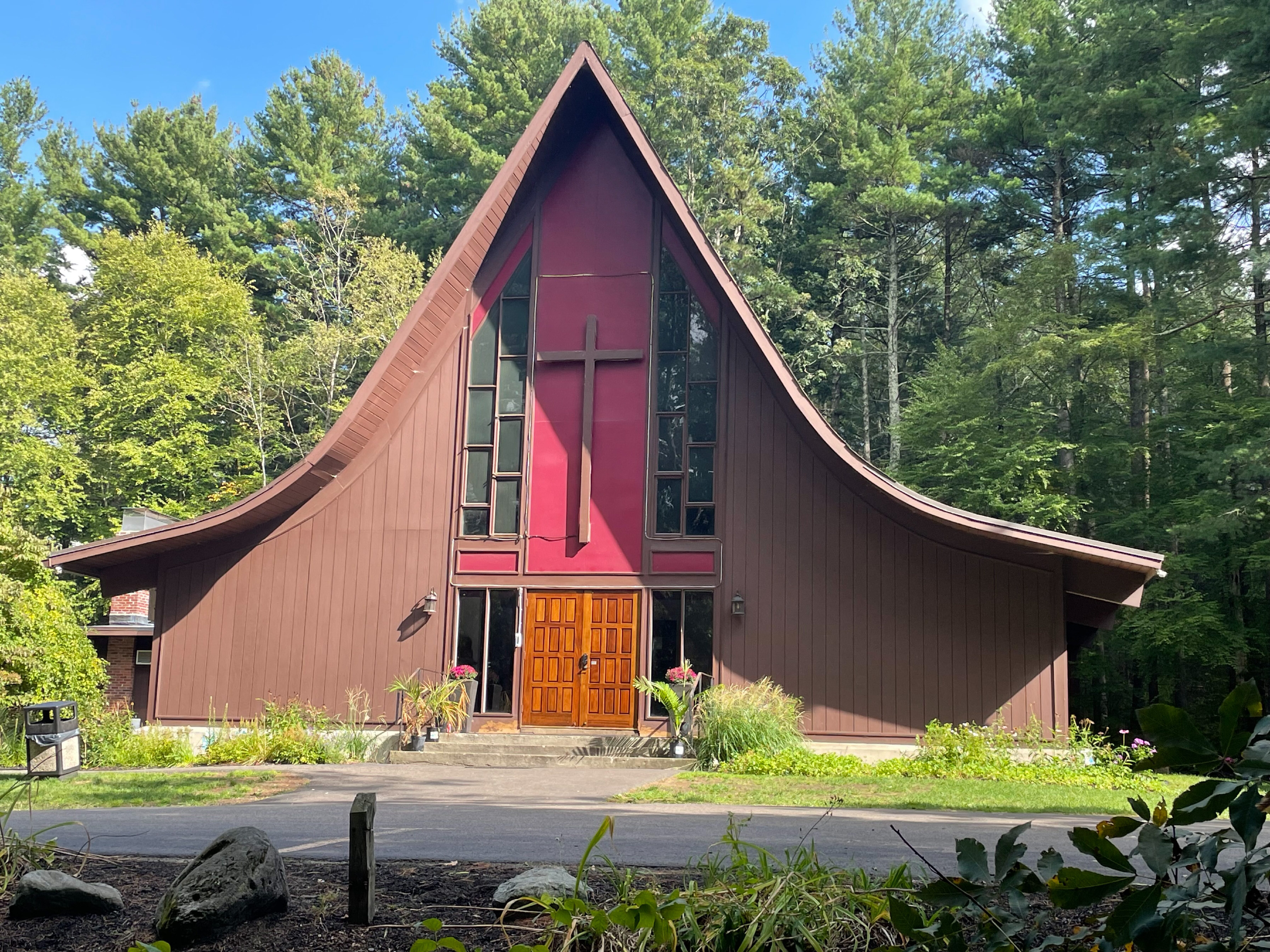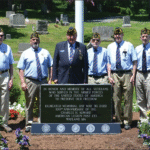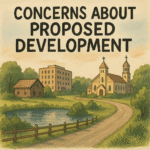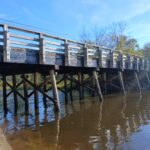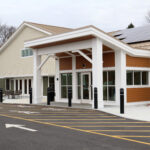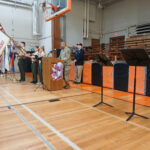Neighbors on Rice Road were stunned by the magnitude of St. Philopater Mercurius & St. Mina Copic Orthodox Church’s new proposed construction project, which was revealed to them at a church meeting on September 3. The scope of the project was also discussed by the Design Review Board on September 9 and the Conservation Commission on September 10. St. Philopater is located on 169 Rice Road, a designated scenic road in Wayland that runs from Old Connecticut Path to Route 30.
The congregation plans to tear down its current building and replace it with a significantly larger church featuring two 100 foot towers and four additional buildings. In addition to the church, the new religious campus will include a youth center, a Sunday school, senior housing, and a Diocese Center that will contain the church’s administrative offices, function and conference facilities, storage space, and temporary living quarters for visiting dignitaries, as well as an athletic field. The parking lot will be expanded from 90 to 190 spaces.
The project, which includes the removal of approximately 500 trees and the addition of significantly more lighting, will be constructed in three phases of about 18 months each, said Deacon George Ghaly.
At the Design Review Committee meeting, Shaun Landon of DSK Architects noted that the first two phases would take 18 months; however, with the addition of the diocesan building, the total project completion would be 10 to 15 years.
The church meeting began with Ghaly providing details on the campus construction, saying that the campus would not be encroaching on Rice Road. He also said trees along the road would not be cut down, but from viewing the diagram, it appears they may be retaining only a single screening line from the street.road, the additional lighting, the height of the two towers, the loss of trees, and the length of the construction project. Residents of Turkey Hill, whose properties abut the church, were concerned about blasting, noise, the proximity of the buildings, septic systems, stormwater, wetlands, and the potential devaluation of their property.
Ghaly answered most of their questions, emphasizing the church was set back from the road and that the hills would obscure their project, but admitted to one woman that her condo would be twenty feet from the back of the church and that the 30-foot hills would not obscure the 100-foot towers. He said the noise, once construction was completed, would not be any greater than it is now.
But residents questioned his response, noting that the number of parking spaces would more than double, and an outside soccer field would be added. Ghaly said that there would be no blasting and all the light would be downlighting, lighting fixtures mounted above the illuminated area, casting light downward. Their attorney, Jonathan Silverstein of Blatman, Bobrowski, Haverty & Silverstein, stated that the church was complying with all town regulations, except for the height of the towers.
A Turkey Hill resident said that he purchased the condo at Turkey Hill because of its location, “I thought that I would spend the rest of my life surrounded by the peace and tranquility of nature,” he said.
“I totally respect and appreciate anybody’s theology and support their methods of celebration, but with a heavily trafficked road with no sidewalks, as a walker, this road will become more dangerous,” a Meadows resident later said. Another Meadows resident expressed the sentiment of most attendees, saying, “I don’t object to the expansion, just to the scale of the project.”
A Turkey Hill resident asked Ghaly what the church provided to the community. After a pause, Ghaly said that they allowed the Turkey Hill condo association to hold their board meeting at the church but could not name anything else. A longtime Meadows resident later commented that when the Coptic Church purchased the property 10 years ago, the Meadows Association was notified that they could no longer have their annual board meeting there. When a Turkey Hill resident asked if the 25 senior residences would be open to the public, he paused, then said yes. Then he repeated that the purpose of the senior housing was so that he would no longer have to pick up seniors living in Manchester-by-the-Sea and from other towns that were not close by. Those seniors would be living on the church premises after construction is completed.
Questions rather than feedback
It appeared from the responses given that the sole purpose of the meeting was to answer neighbors’ questions, rather than to gather input. The timing of the neighborhood meeting further evidenced this. The neighborhood meeting was held on September 3, and the church met with the planning board on August 24, which was rescheduled from August 4. According to Silverstein’s letter to the Planning Board, “this project is the culmination of years of planning efforts”.
Rice Road is one of the 18 designated scenic roads in Wayland. At 2.5 miles, it is the town’s longest. The purpose of the scenic bylaw “is to maintain the rural, natural, historic, and scenic character of the town’s roads,” according to the Town of Wayland’s website. Bikers frequent the route because of its bucolic views. The two entrances to Hamlin Conservation Trails are located on Rice Road. Hamlen Wood, with its extensive trails on conservation land, is popular among dog walkers and hikers. Historic Mainstone Farm and three condo associations are located on this road. To retain the country road feel, many trees line the condo properties and the condos have long entrance roadways so they are not visible from the main road.
At the subsequent Design Review Board (DRB) and Conservation Commission (ConCom) meetings, both boards felt that DSK and the landscape architectural firm did not provide enough information to address their questions, and concluded their meetings requesting more details. DRB members emphasized the importance of detailed plans, particularly for passive solar building orientation, parking lot lighting, and landscape design. Board Chair William Sterling acknowledged that town approvals were subject to the Dover Amendment (see story above) but stated that the interpretation of the Amendment to this project would be decided by the town’s attorney and the Planning Board.
The ConCom met on September 10 with representatives from the church. The discussion focused on potential impervious areas, setbacks, deforestation, gradation, neighboring wetlands, the riverfront buffer zone, and stormwater. The church’s representatives did not provide all the required information, and some of their information was based on old regulations.
ConCom Chair Sean Fair also said that meeting with his group was premature, as the plans were likely to change due to the number of trees to be removed. The Board of Health has not had an opportunity to review the septic plan. Member Shannon Fischer stated that the deforestation was “egregious” and noted that barely a square foot of the five and a half acres remained “untouched.” She felt that changes should be made that were more “environmentally sensitive”.
The meeting concluded with the church’s representatives agreeing to provide additional information, and ConCom deferring a vote until after the Planning Board and Board of Health reviewed the plans. The Planning Board meeting, which will include recommendations from the Board of Health and the Zoning Board, is scheduled for October 15.


